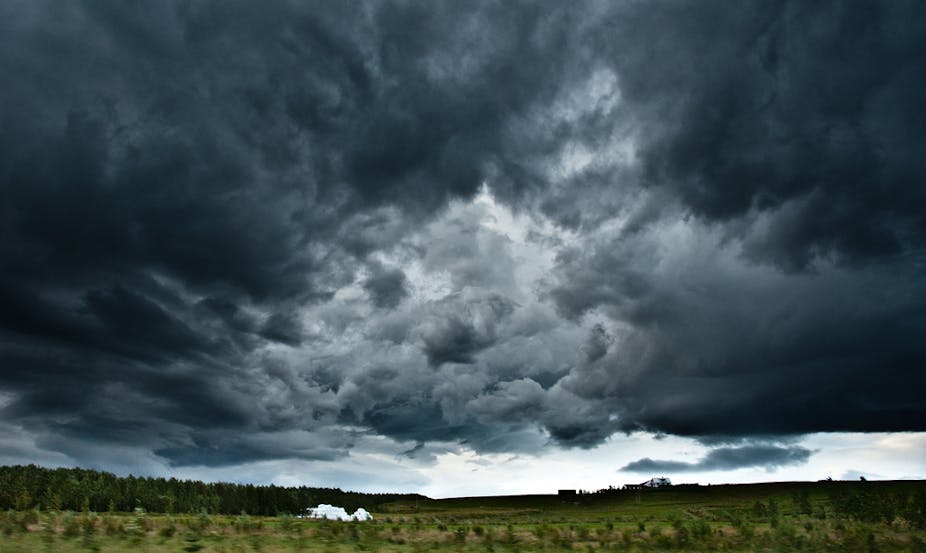Most Australians believe that climate change is real and want to learn more about it, but the debate in the media and on the internet makes it difficult for lay people to know who and what to believe.
There are uncertainties in climate science, as in any scientific field, and scientists are quite open about these. But they are often misrepresented.
In the claims and counterclaims by various climate change experts and other commentators, one yardstick that can be used is whether the “science” being put forward has passed the scrutiny of peer-review before being published.
Peer review is a process in which relevant experts assess the competence, significance and originality of the research.
There are a number of recent assessments of peer-reviewed climate change science:
The Intergovernmental Panel on Climate Change (2007): Climate Change 2007 Synthesis Report
The Royal Society (2010): Climate Change: A Summary of the Science
The Australian Academy of Science (2010): The Science of Climate Change: Questions and Answers
The Climate Change Commission (2011): The Critical Decade.
Within each of these reports there is a distinction between science that is robust and science that is relatively uncertain.
Chapter 6 of the IPCC (2007) Synthesis Report lists 21 robust findings and 18 key uncertainties. These are grouped and summarised below.
Robust findings: the things we know
There is clear evidence for global warming and sea level rise.
Changes that are being observed in many physical and biological systems are consistent with warming.
Due to the uptake of anthropogenic CO₂ since 1750, ocean acidity has increased.
Most of the global average warming over the past 50 years is very likely due to anthropogenic greenhouse gas increases.
Global greenhouse gas emissions will continue to grow over the next few decades, leading to further climate change.
Due to the time scales associated with climate processes and feedbacks, anthropogenic warming and sea level rise would continue for centuries even if greenhouse gas emissions were to be reduced sufficiently for atmospheric concentrations to stabilise.
Increased frequencies and intensities of some extreme weather events are very likely.
Systems and sectors at greatest risk are ecosystems, low-lying coasts, water resources in some regions, tropical agriculture, and health in areas with low adaptive capacity.
The regions at greatest risk are the Arctic, Africa, small islands and Asian and African mega-deltas. Within other regions (even regions with high incomes) some people, areas and activities can be particularly at risk,
Some adaptation is underway, but more extensive adaptation is required to reduce vulnerability to climate change.
Unmitigated climate change would, in the long term, be likely to exceed the capacity of natural, managed and human systems to adapt.
Many impacts can be reduced, delayed or avoided by mitigation (net emission reductions). Mitigation efforts and investments over the next two to three decades will have a large impact on opportunities to achieve lower greenhouse gas stabilisation levels.
Key uncertainties: the things we’re not sure about
Observed climate data coverage remains limited in some regions.
Analysing and monitoring changes in extreme events is more difficult than for climatic averages because longer data sets with finer spatial and temporal resolutions are required.
Effects of climate changes on human and some natural systems are difficult to detect due to adaptation and non-climatic influences.
Difficulties remain in reliably attributing observed temperature changes to natural or human causes at smaller than continental scales.
Models differ in their estimates of the strength of different feedbacks in the climate system, particularly cloud feedbacks, oceanic heat uptake and carbon cycle feedbacks.
Confidence in projections is higher for some variables (such as temperature) than for others (such as precipitation), and it is higher for larger spatial scales and longer averaging periods.
Direct and indirect aerosol impacts on the magnitude of the temperature response, on clouds and on precipitation remain uncertain.
Future changes in the Greenland and Antarctic ice sheet mass are a major source of uncertainty that could increase sea level rise projections.
Impact assessment is hampered by uncertainties surrounding regional projections of climate change, particularly precipitation.
Understanding of low-probability/high-impact events and the cumulative impacts of sequences of smaller events is generally limited.
Barriers, limits and costs of adaptation are not fully understood.
Estimates of mitigation costs and potentials depend on uncertain assumptions about future socio-economic growth, technological change and consumption patterns.
Do we know the world is warming due to human activity?
The IPCC statement most often challenged by so-called sceptics is “Most of the global average warming over the past 50 years is very likely due to anthropogenic greenhouse gas increases”. Those who are keen to dig deeper into the peer-reviewed literature on this issue can read more:
Chapter 9 of the IPCC (2007) Working Group 1 report
Easterling and Wehner (2009) Is the climate warming or cooling?
Stott et al (2010) Understanding and attributing climate change
Kaufmann et al (2011) Reconciling anthropogenic climate change with observed temperature 1998–2008.
Some of the other common issues raised about climate change science have been addressed by CSIRO.
Navigating the maze of information about climate change science is challenging for a layperson. Recent assessments of the peer-reviewed literature put this into perspective.
There are many robust findings about the science, and these provide a basis for action through mitigation of greenhouse gases as well as adaptation to reduce our vulnerability to climate change impacts.
While there are also scientific uncertainties that need further research, these don’t undermine a compelling scientific case for increased risk management.

